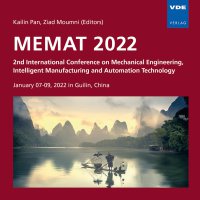Computational Dynamics of modeling BMW M3 and Chevrolet Cavalier’s U-turn and Lane Change
Konferenz: MEMAT 2022 - 2nd International Conference on Mechanical Engineering, Intelligent Manufacturing and Automation Technology
07.01.2022 - 09.01.2022 in Guilin, China
Tagungsband: MEMAT 2022
Seiten: 8Sprache: EnglischTyp: PDF
Autoren:
Ma, Xiaowei (Shanxi Experimental Secondary School, Taiyuan, Shanxi Province, China)
Shi, Haiwei (Swanson School of Engineering, University of Pittsburgh, Pittsburgh, Pennsylvania, USA)
Wang, Lyukangcheng (Suzhou High School of Jiangsu Province, Suzhou, Jiangsu Province, China)
Zhu, Kangrui (Shanghai United International School Jiaoke campus, Minhang, Shanghai, Municipality, China)
Inhalt:
In the past decades, the automobile industry has developed extremely fast. From the steam-powered vehicles to F1 racer, the shape and performance changed significantly. However, in the field of automotive performance research, the turning technology is always an important issue for driving. So in this paper, we will study the speeds and turning angle’s effect on car’s turning. The model of dynamics of cars, specifically the U-turn and Lane Change trajectories of BMW M3 and Chevrolet Cavalier are investigated. The models are shown via linear and nonlinear force model of cars and motions of cars, which are computed and plotted in Python. Then, we plotted the trajectories and turn angles of the two cars in two force models. After obtaining the data from the plots, we analyzed the causes of the results. Since the Chevrolet Cavalier has a larger turning radius and slip angle, which causes it more difficult to finish sharp turns, we concluded that BMW M3 is more capable of sharp turns and has a better turning performance.


